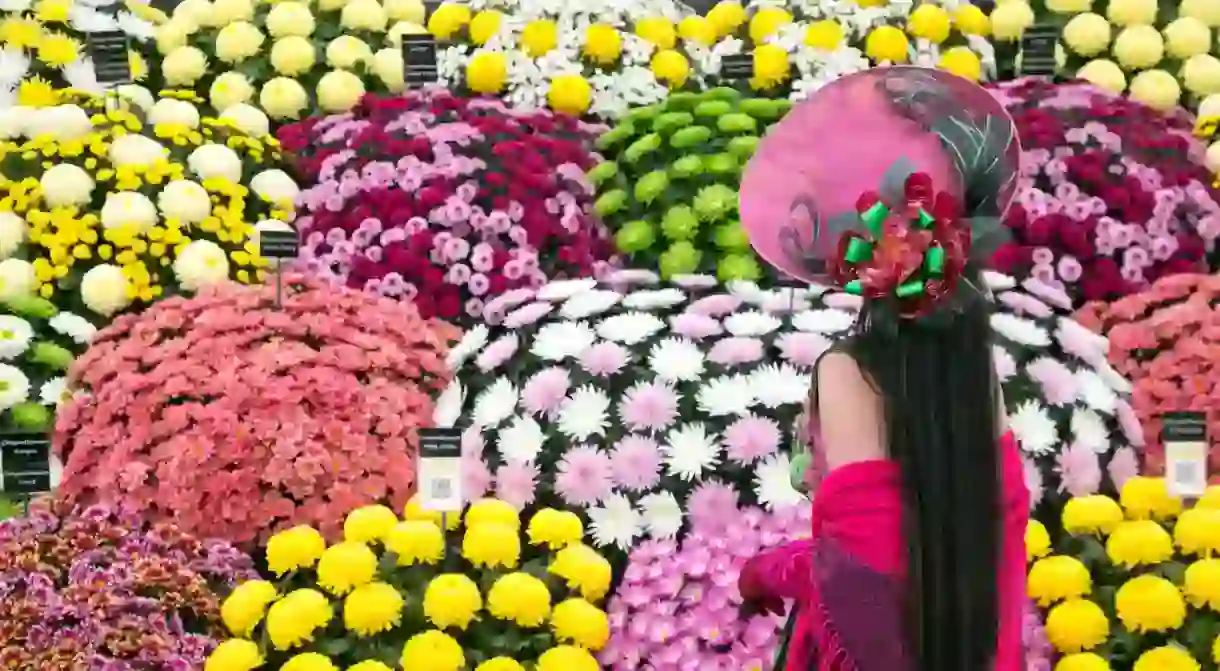Why the English Go Mad for the Chelsea Flower Show

The most important event of the year for flower fans in London has something for everyone, from traditional gardens to futuristic green spaces, exclusive perennials to exotic seeds – and a lot of Pimm’s.
Visiting the Chelsea Flower Show, which takes place every year on the grounds of the Royal Hospital Chelsea in London, is an overwhelming sensory experience. The show grounds are colourful and noisy, and as fragrant as you’d expect from an event that features hundreds of thousands of flowers. For professional gardeners, green-fingered amateurs and garden fans, the show is the highlight of the horticultural season.
A hundred years of flowers
The Chelsea Flower Show has been going since 1913, with breaks only during the two world wars. Over the years, it has become a cultural institution, worth visiting not just for its flowers but to get an insight into one of the most typically British experiences there is. Photographer Martin Parr, the arch-documenter of modern British life, visited the show in 2018 for a Guardian photo essay and described the clientele as “rock-solid middle England, middle-aged, middle-class, grey hair, grey pound – still a very important part of the constituency.”
The audience may be mainly middle-aged, but the show has attempted to move with the times. It publishes statistics for the gender split among the gardeners, and in 2019 one of the garden sponsors was Facebook, ironically presenting a garden called Beyond the Screen. Tom Dixon, the British designer known for his iconic homewares, teamed up with IKEA to imagine the future of urban farming, creating a garden that’s likely to appeal to millennials and Gen Z-ers worried about climate change.

What to see and do at Chelsea
The Chelsea Flower Show takes place over five days, and there are usually over 25 gardens to see. These include the mind-blowing, unmissable show gardens, which compete in a number of categories to win medals that are graded from bronze to gold. There are also artisan gardens, back-to-nature gardens, space-to-grow gardens and many others. On average, show gardens use 3,900 plants, while artisan gardens use 720 and space-to-grow gardens 1,400. And garden-watching is thirsty work – visitors glug 32,145 pints of Pimm’s and 9,051 glasses of Fortnum & Mason champagne.
Every year, a number of well-known faces also flock to the show; past attendees include Gwyneth Paltrow, Helen Mirren, Paul Smith and Terry Pratchett. Ringo Starr has been visiting the show for years, as has the Queen – she is the patron of organiser the Royal Horticultural Society and has been to all but 12 shows during her reign. But for regular visitors, the chance of seeing one of the celebrities is, sadly, probably slim, as they visit the show on the Press and VIP day, the day before it officially opens.

Own your own prize-winning plant
One thing all visitors can do, though, is take a part of the show home with them. At 4pm on the final day the big plant sell-off begins. Show attendees can buy some of the plants that have taken their fancy from the exhibitioners themselves. While you can reserve things that you see during the show, the last day is also a bit of a free-for-all. You need to be on your toes if you’re after something special – people get very excited about the prospect of owning a shrub that might have won a prize, or perhaps even been touched by the Queen.
If you didn’t manage to buy a ticket for Chelsea (they sell out fast!) this last day is also a good opportunity to experience some of the show’s vibe as an outside observer. If you wait by the exit on Chelsea Bridge Road you’ll get a bit of a sense of what the Chelsea Flower Show is about, as happy showgoers come out carrying newly purchased flowers that are sometimes bigger than they are. People schlep trees and shrubs in wheelbarrows, on bikes and sometimes even rickshaws, eager to get a piece of the Chelsea Flower Show into their own gardens.














